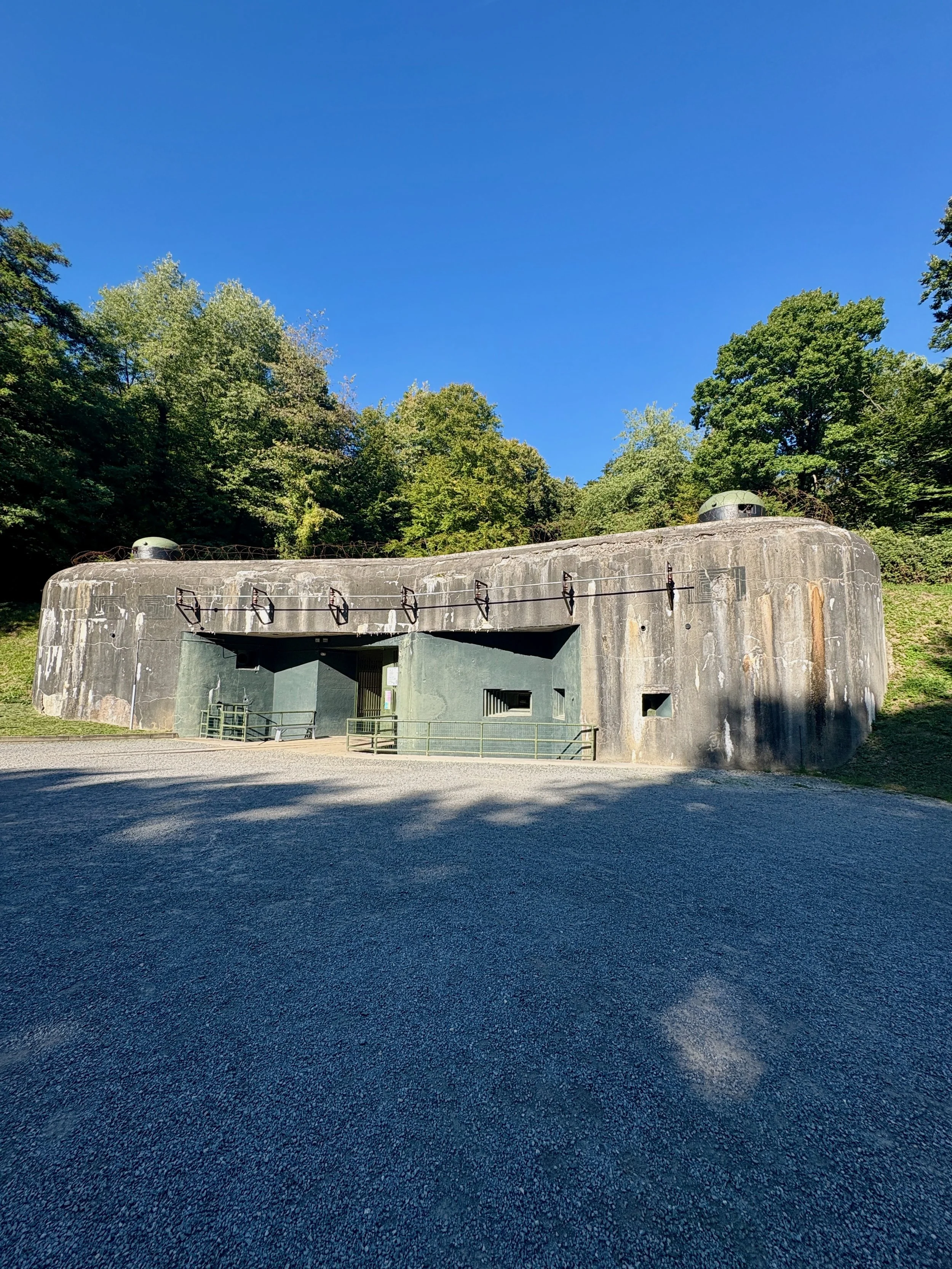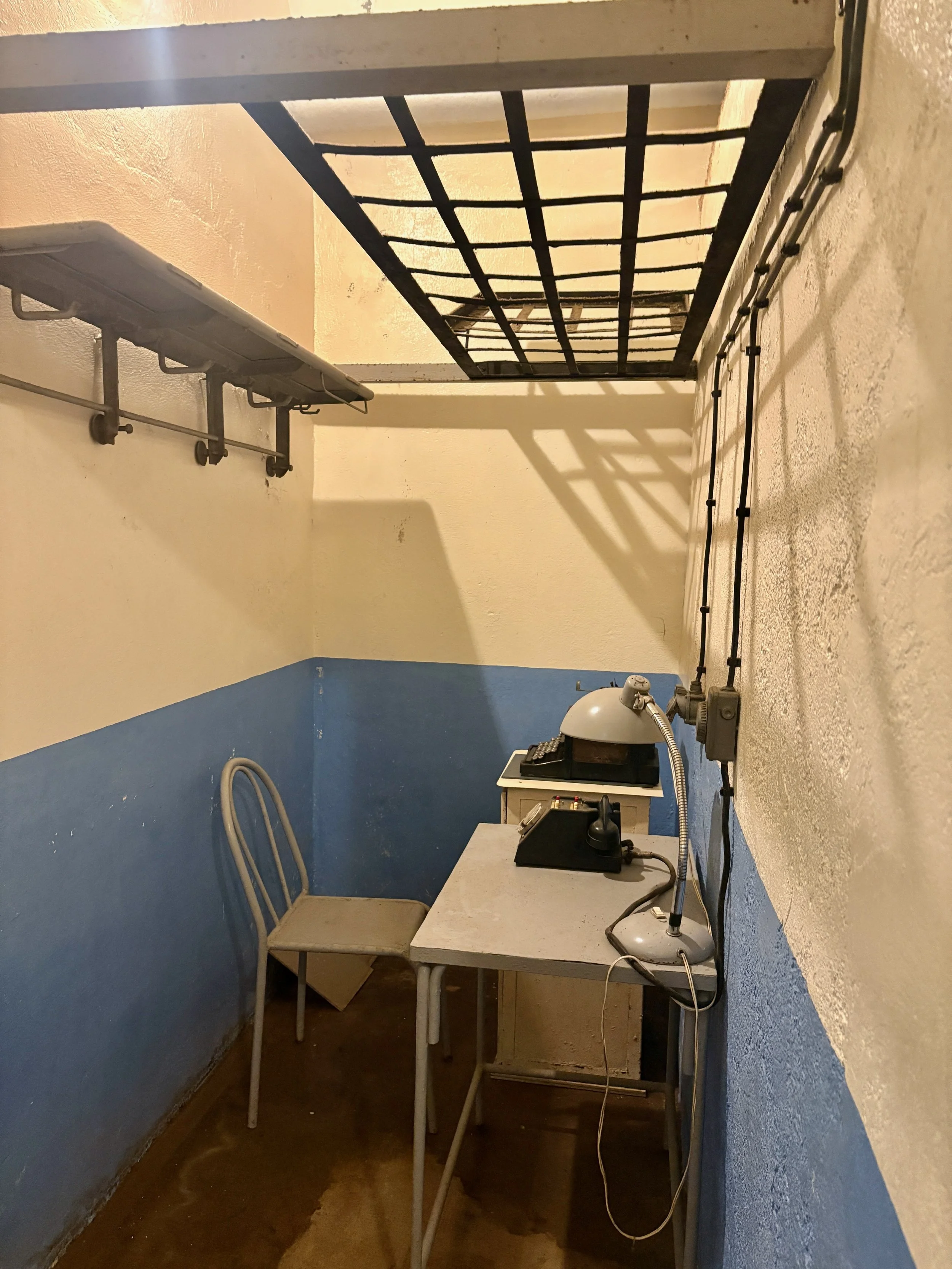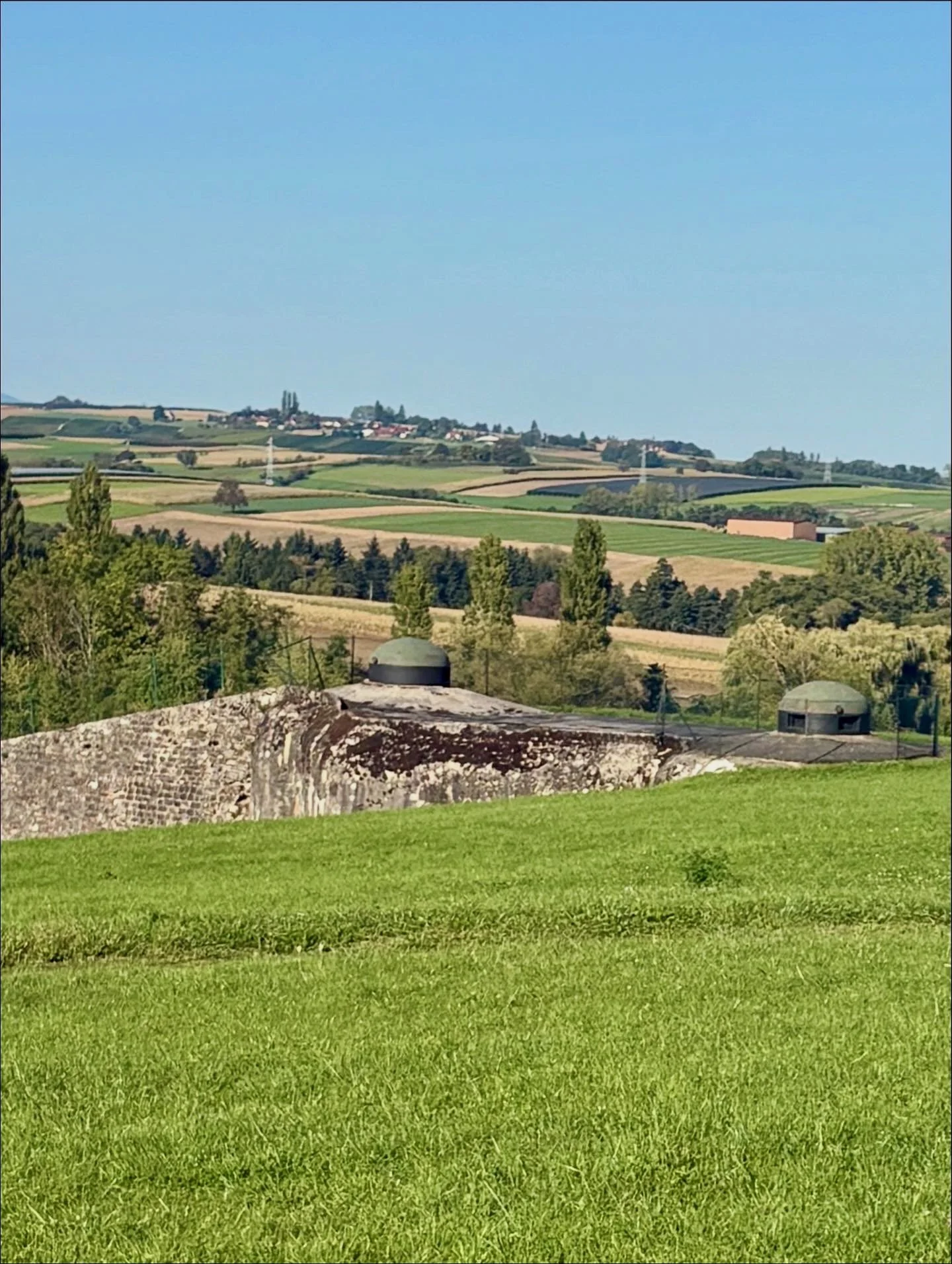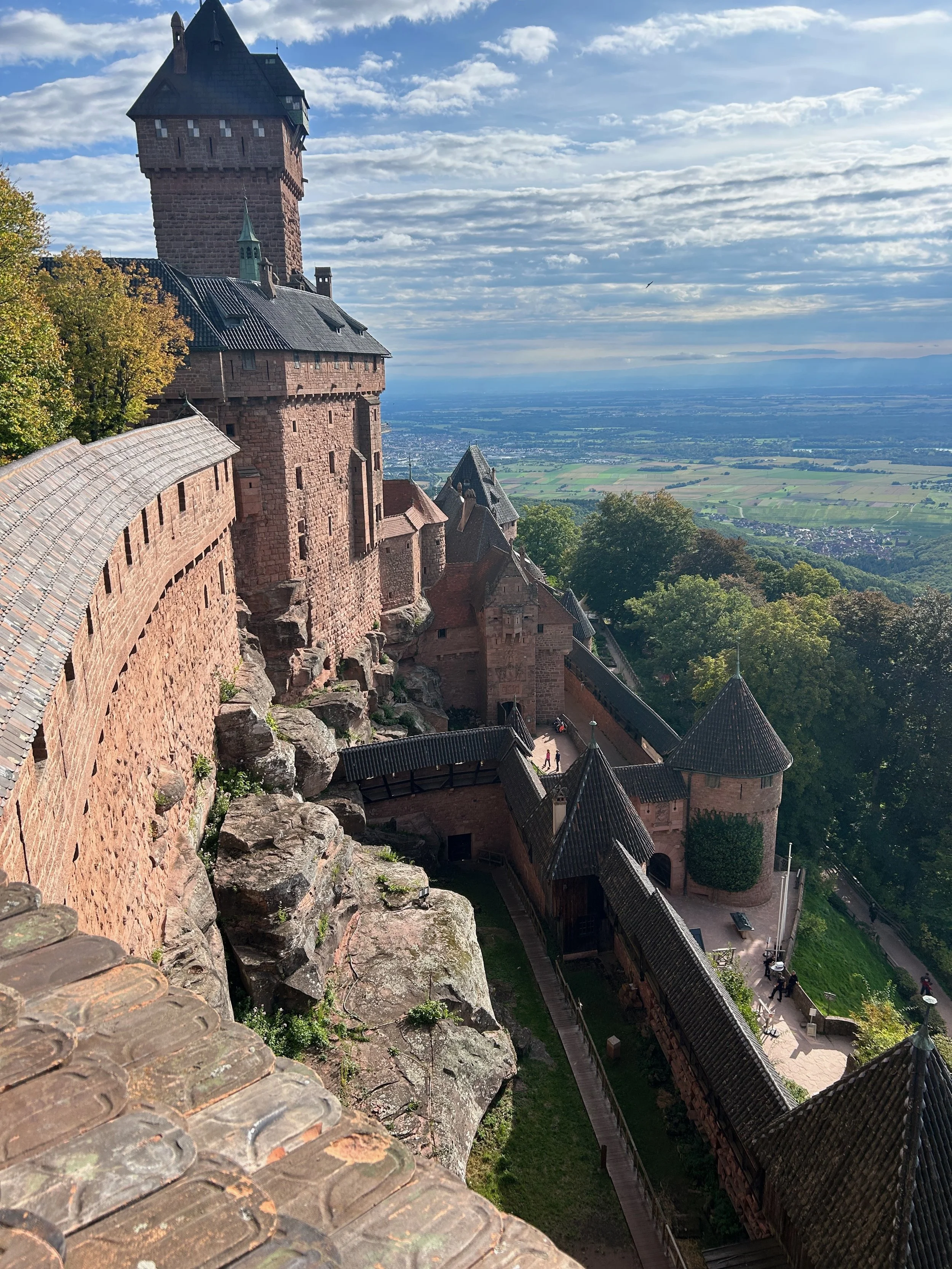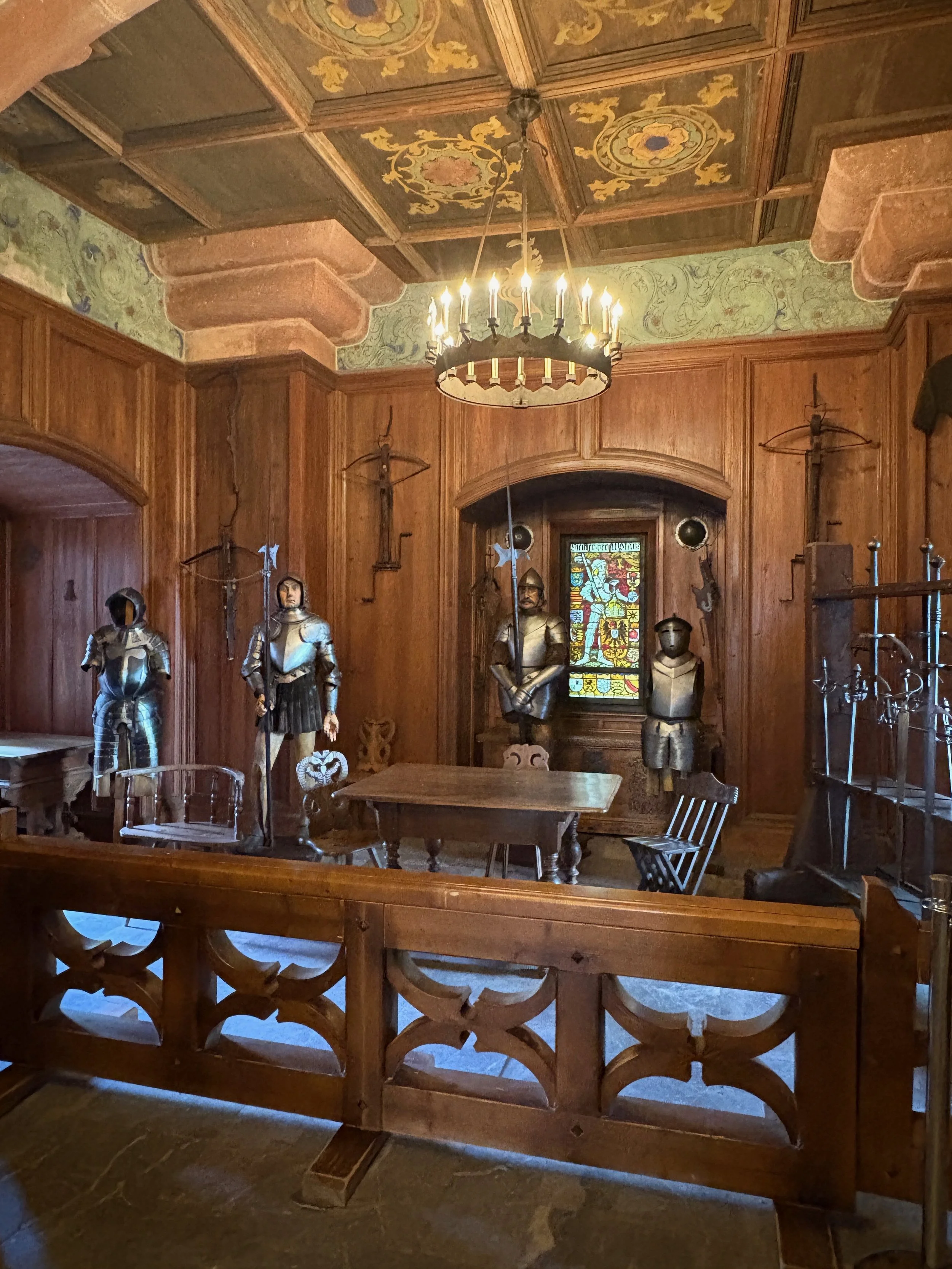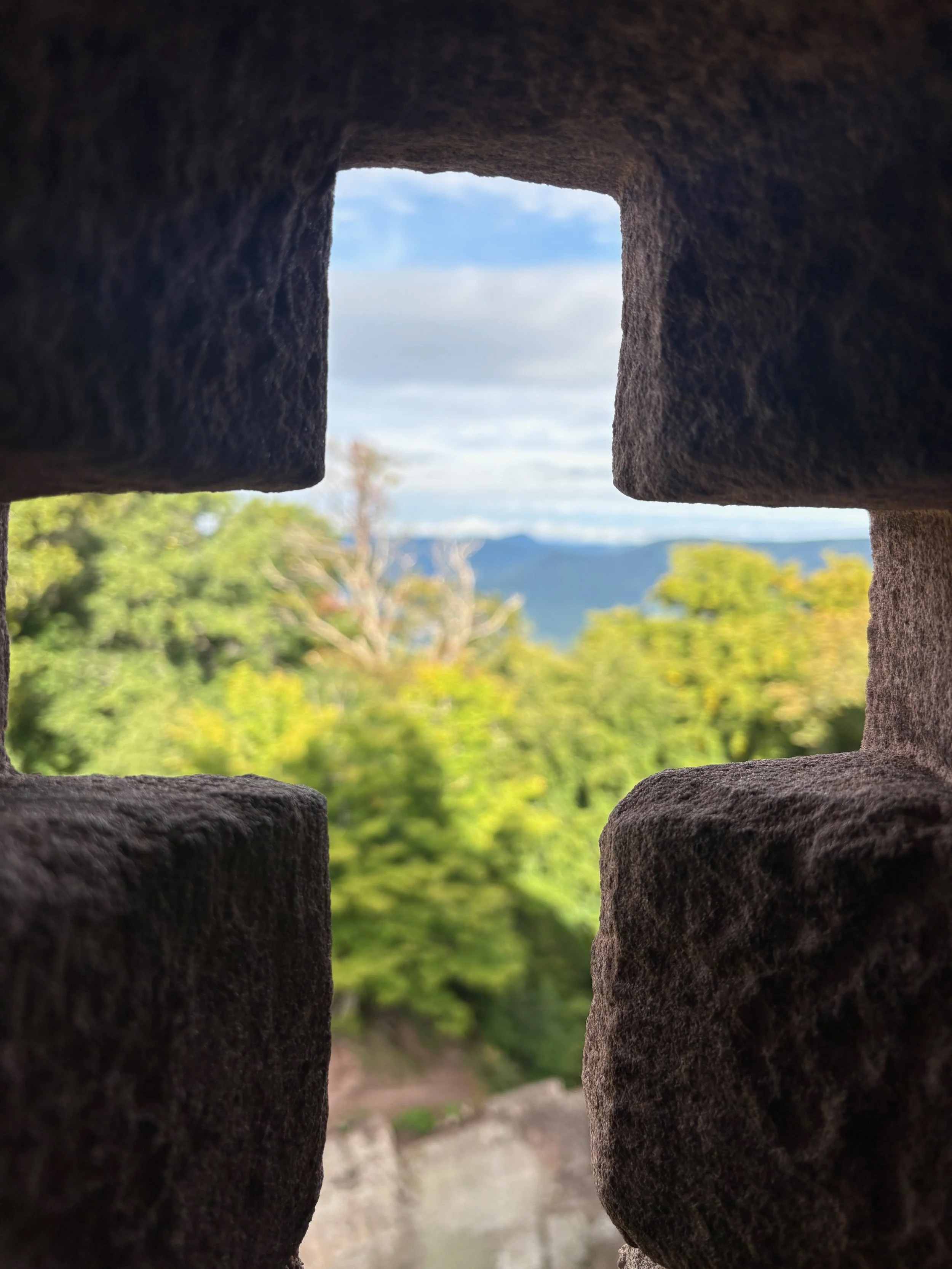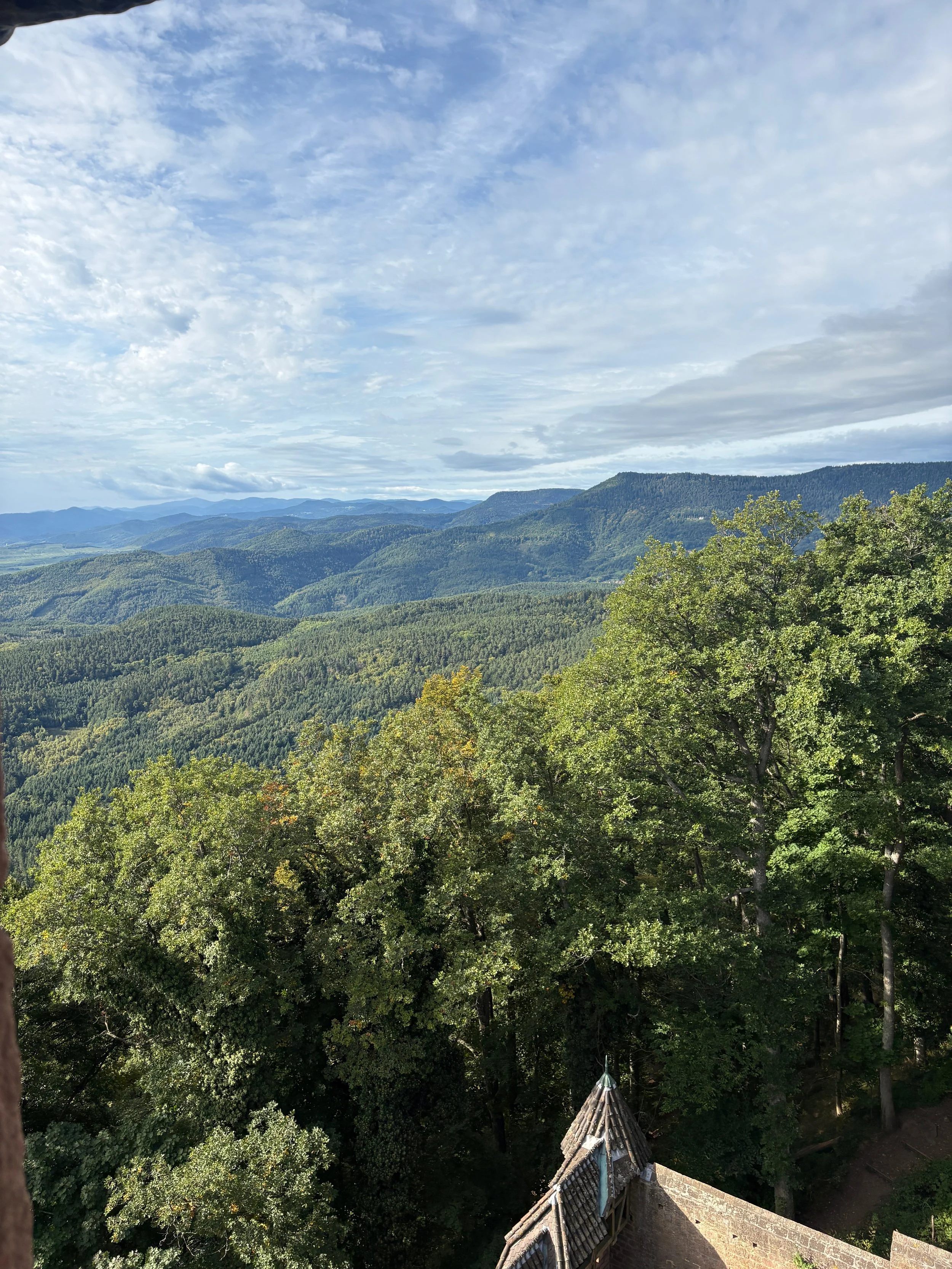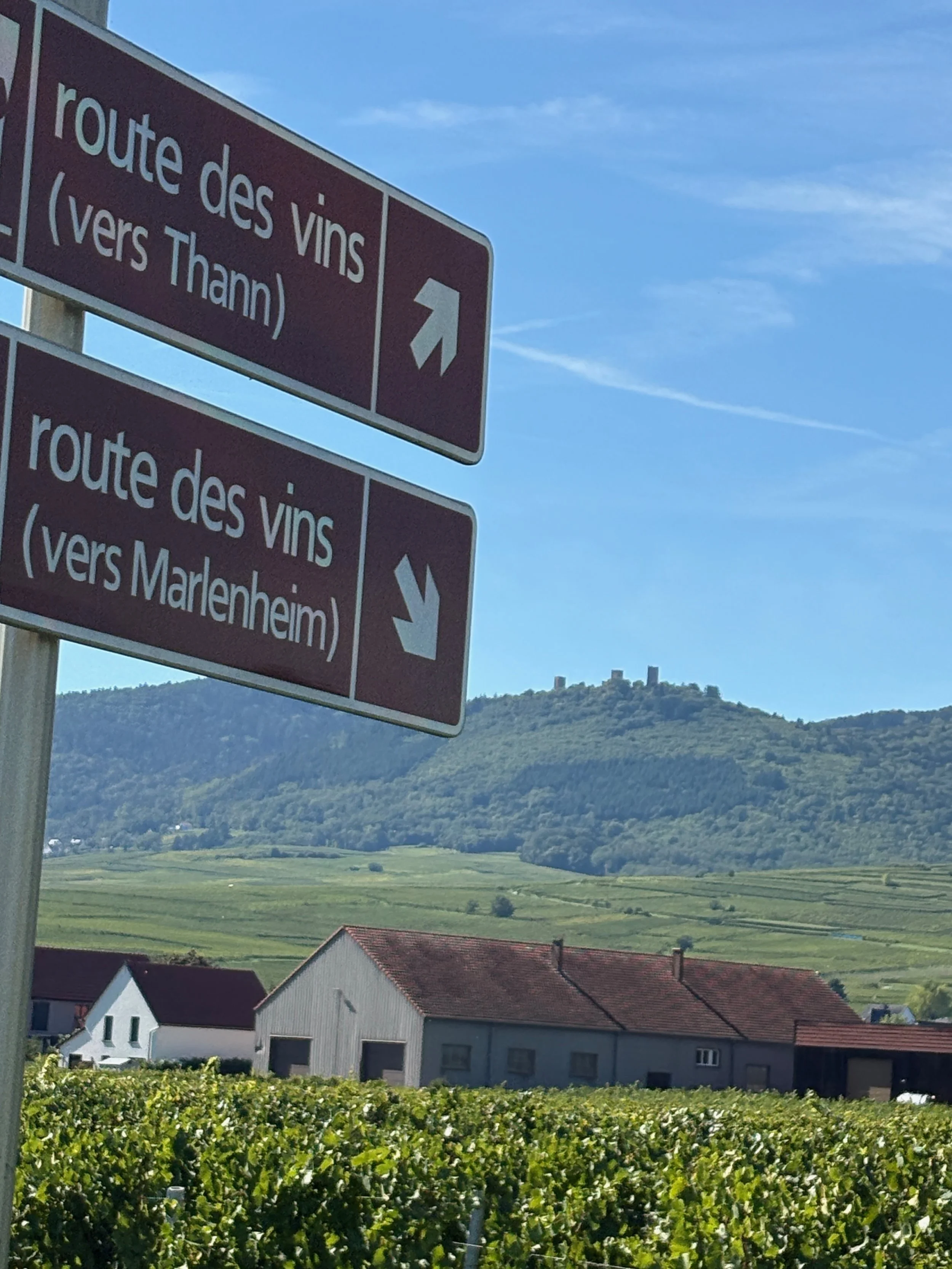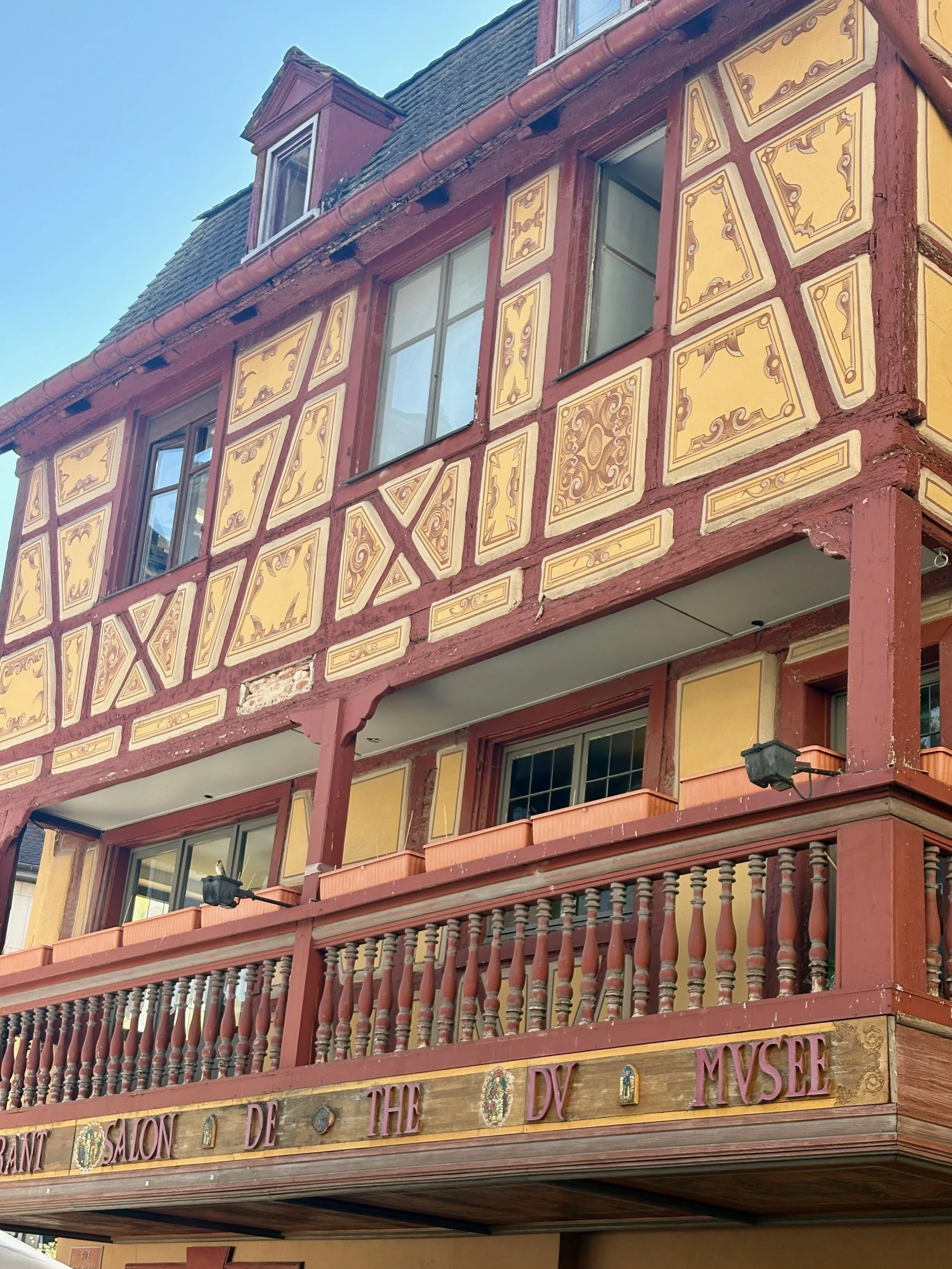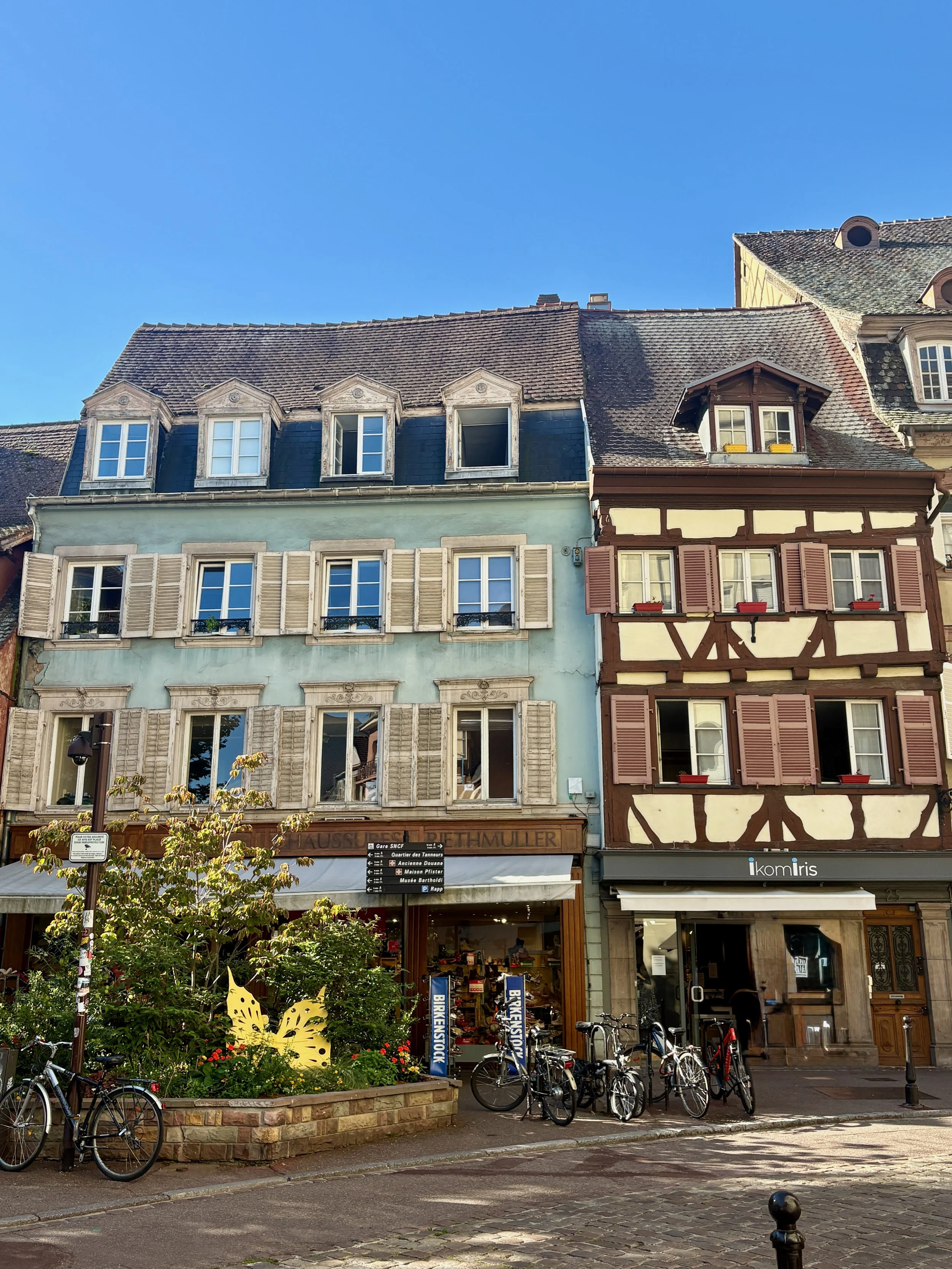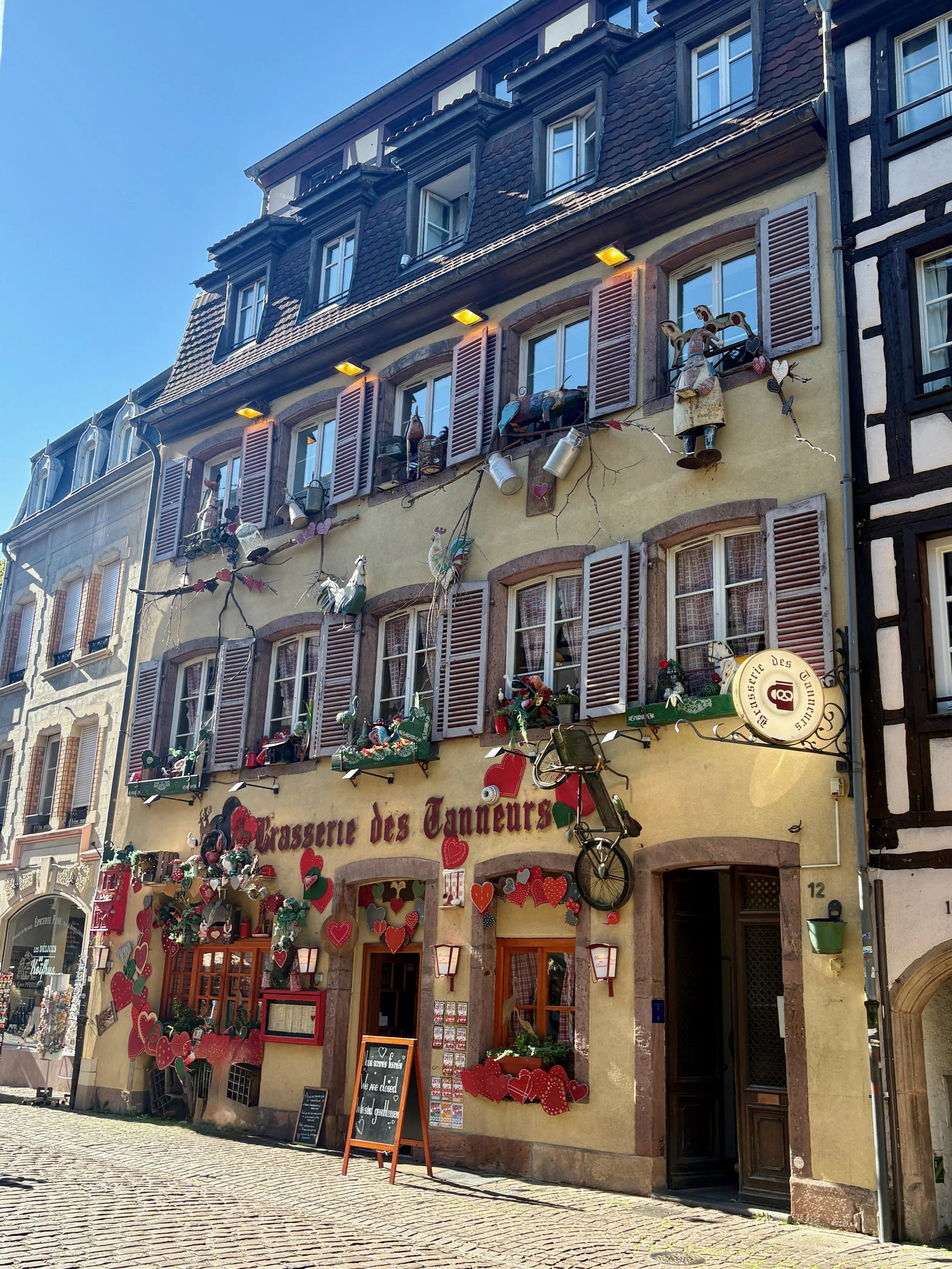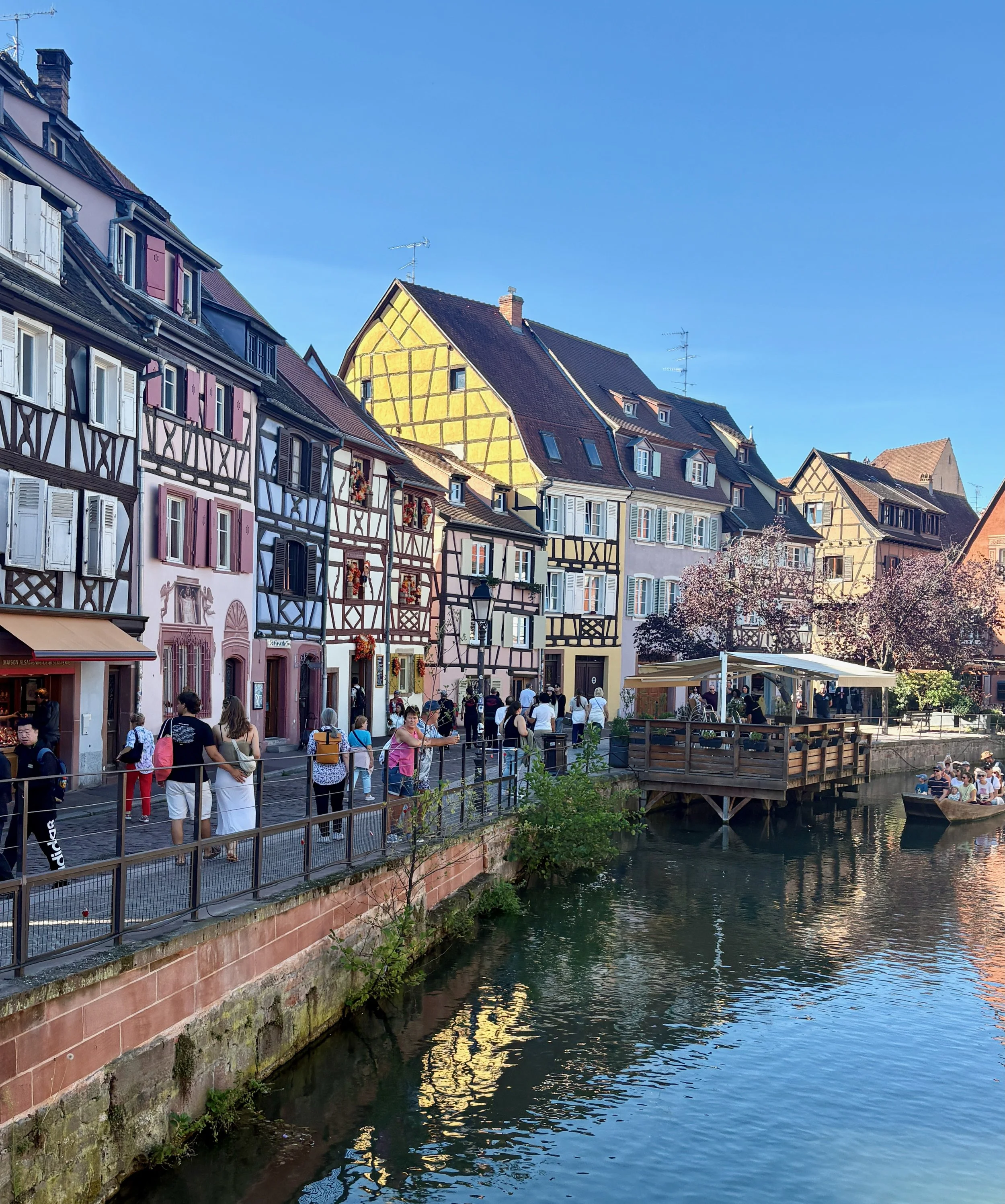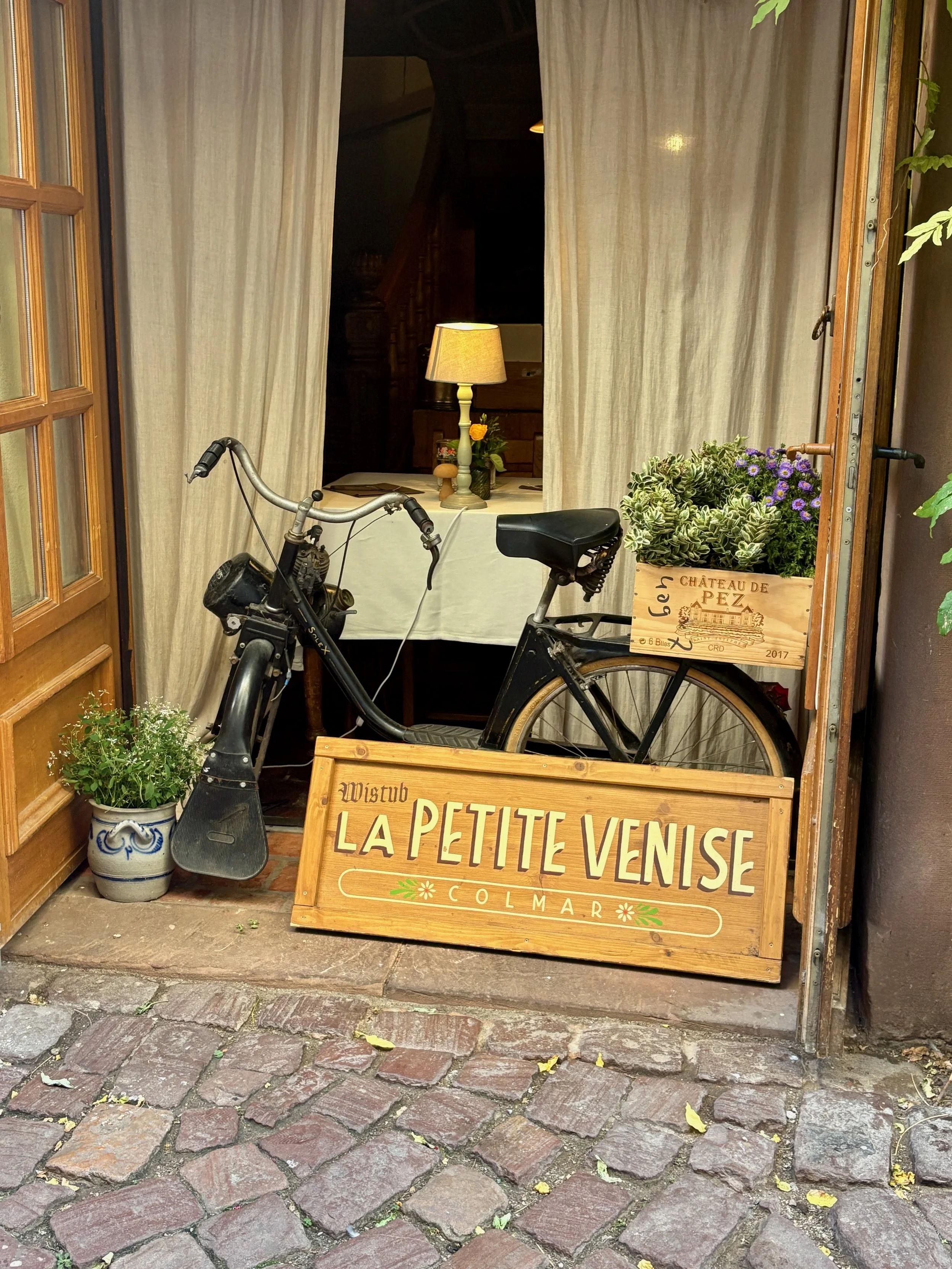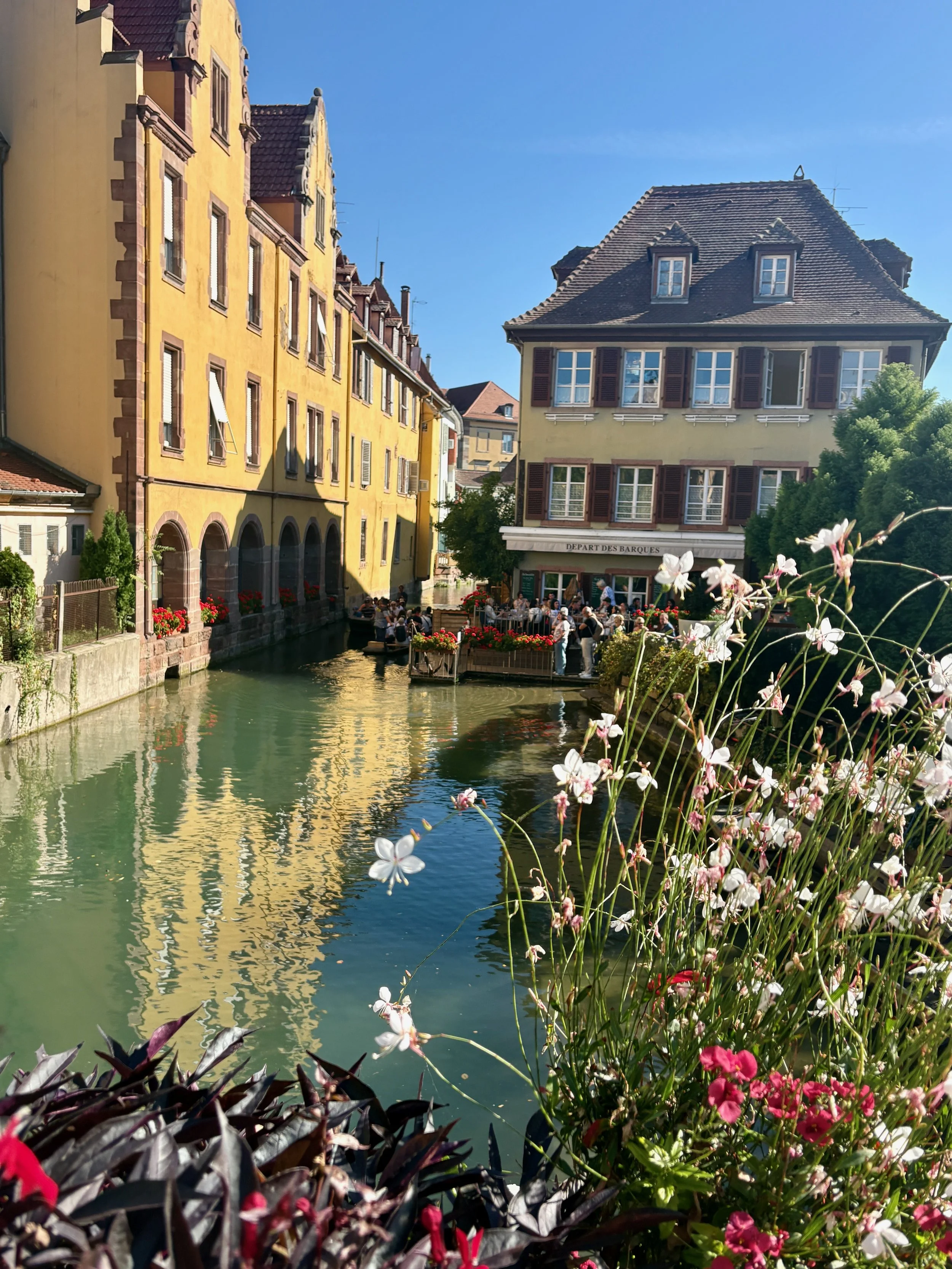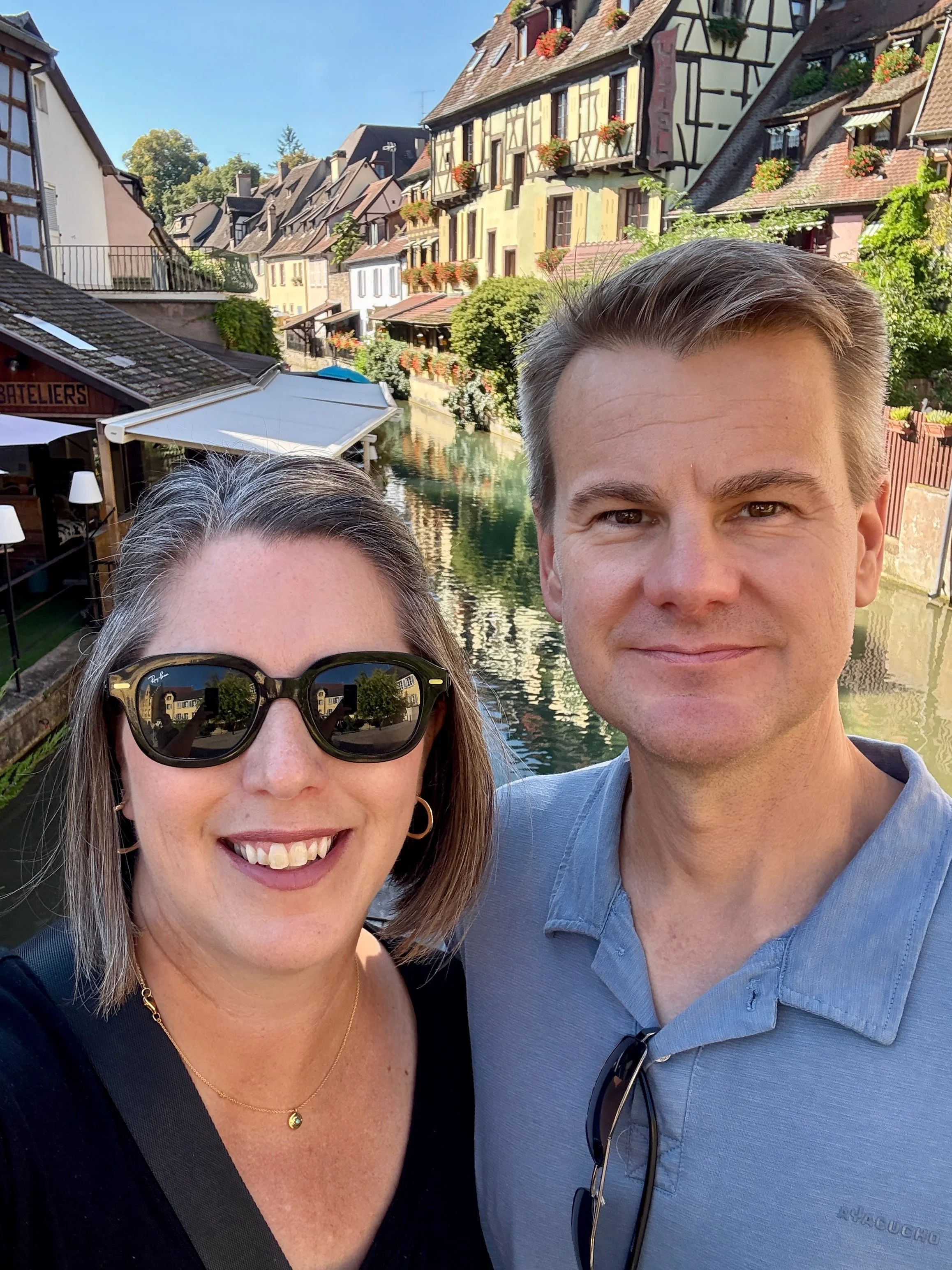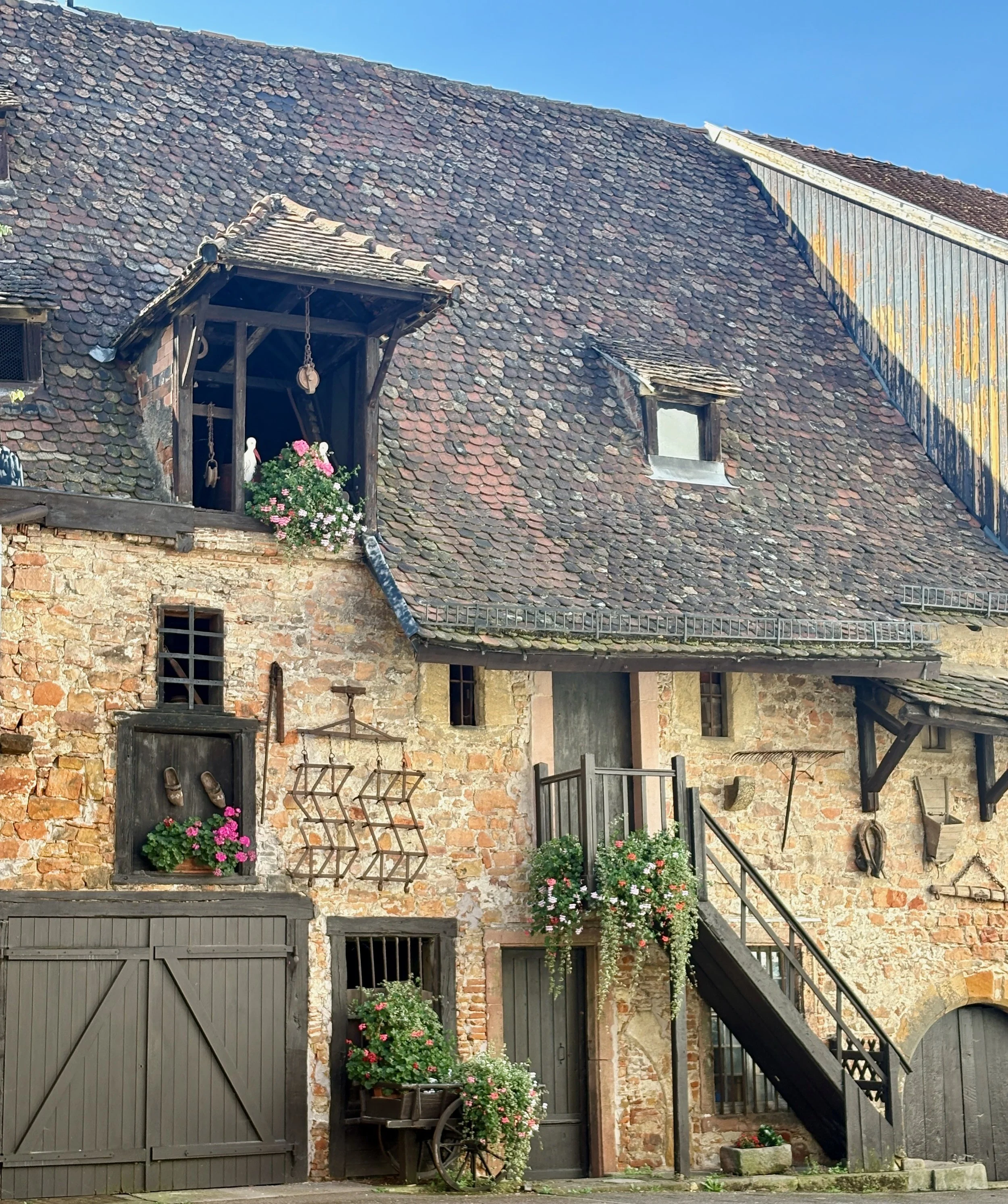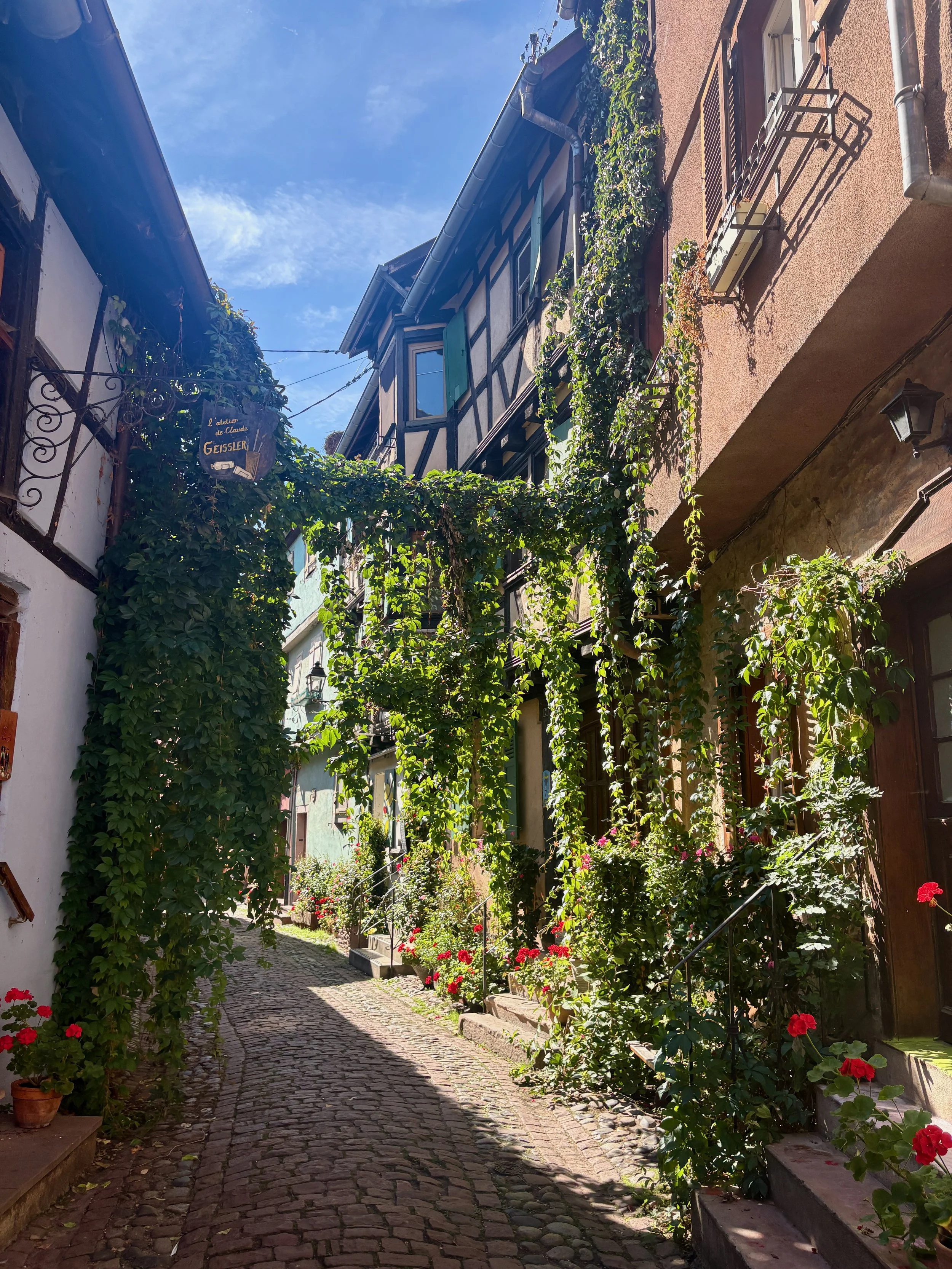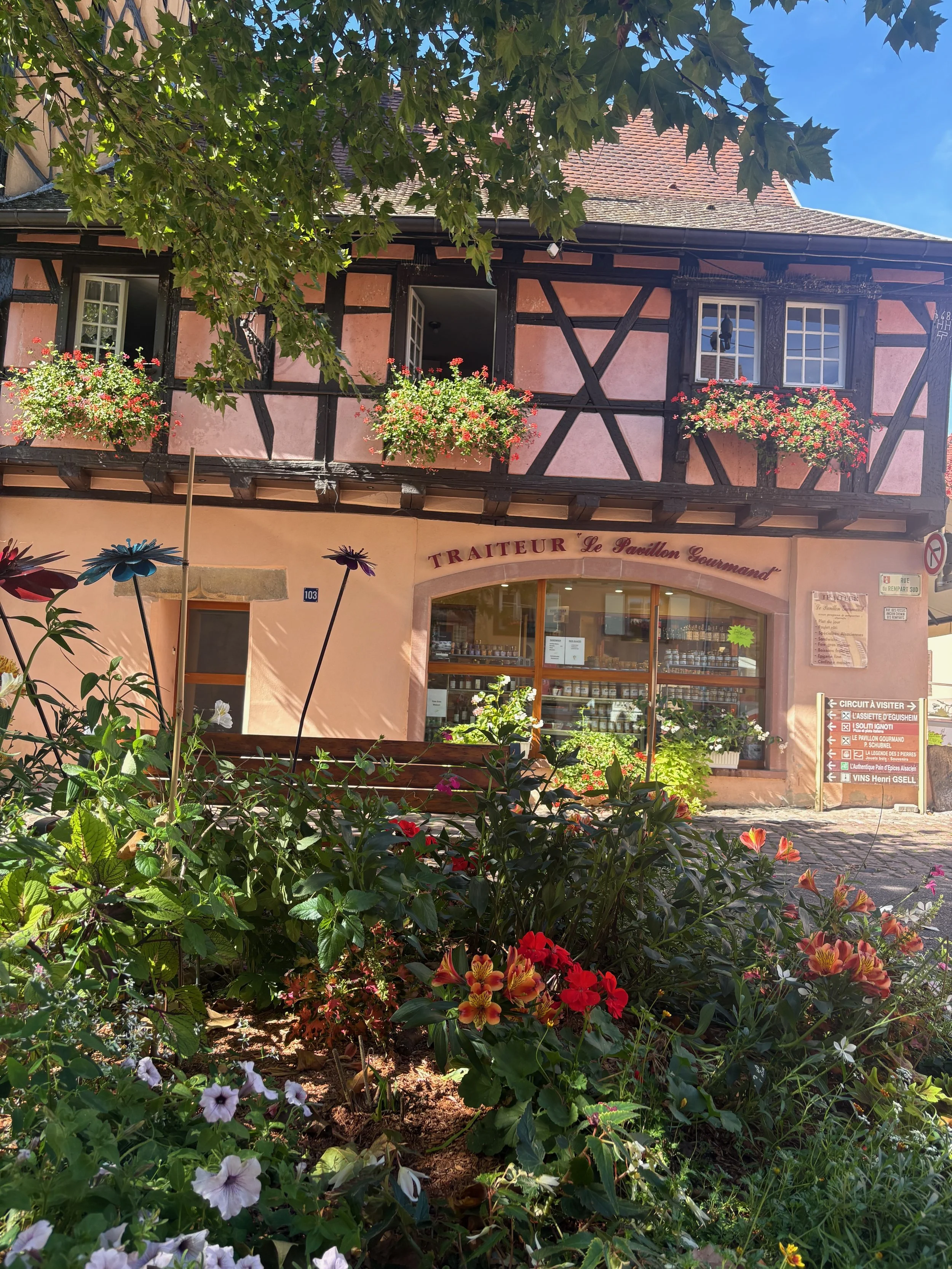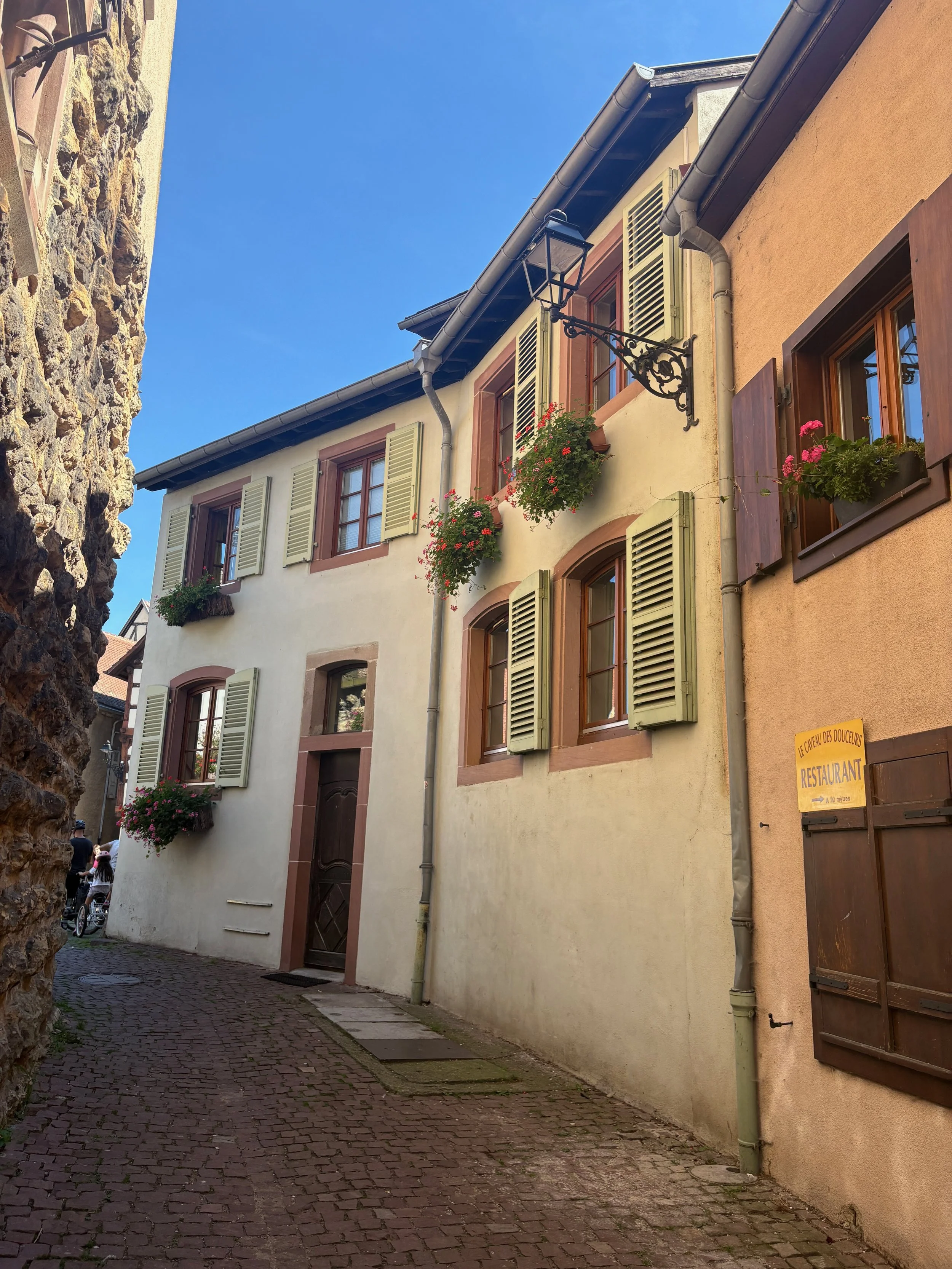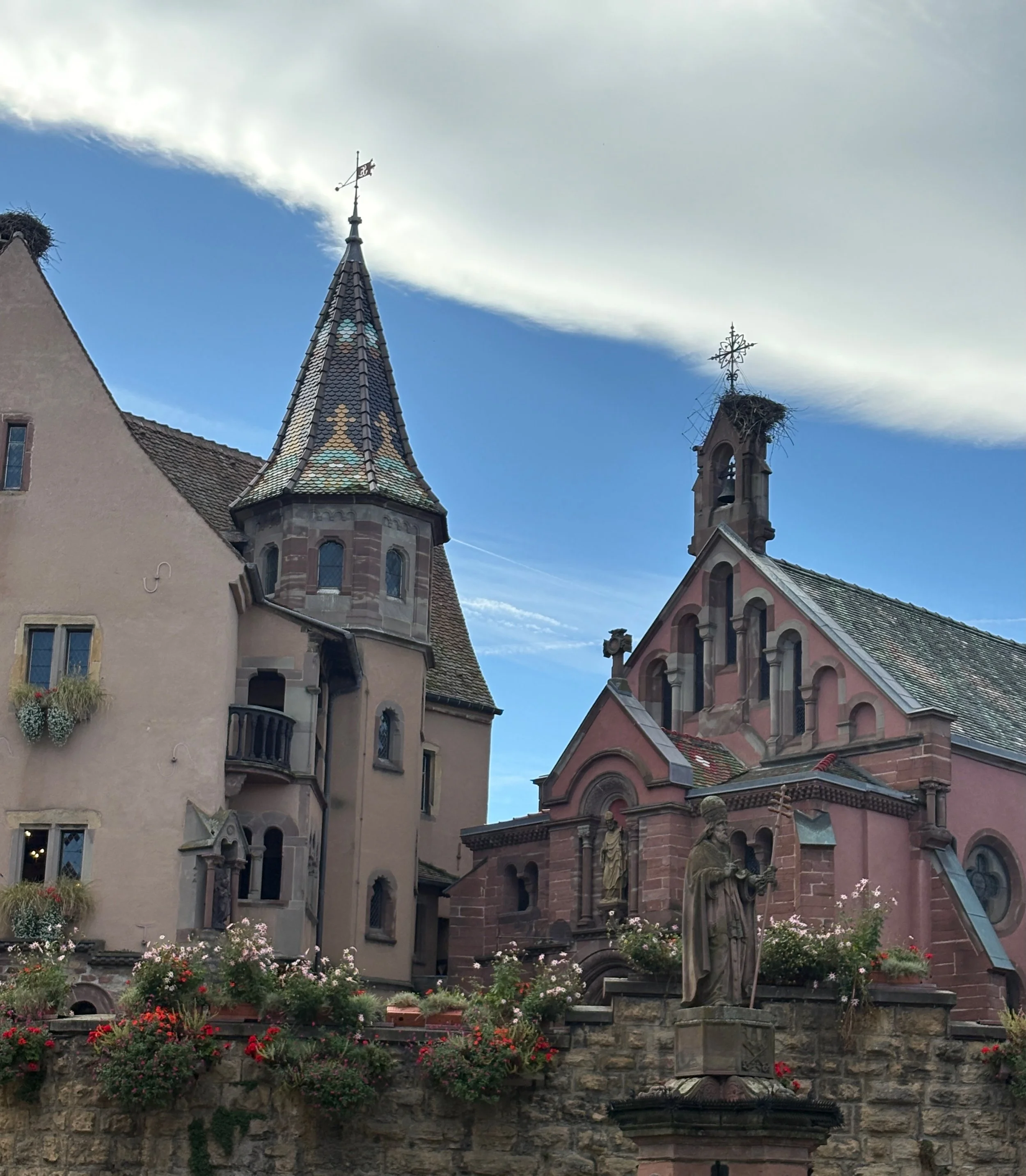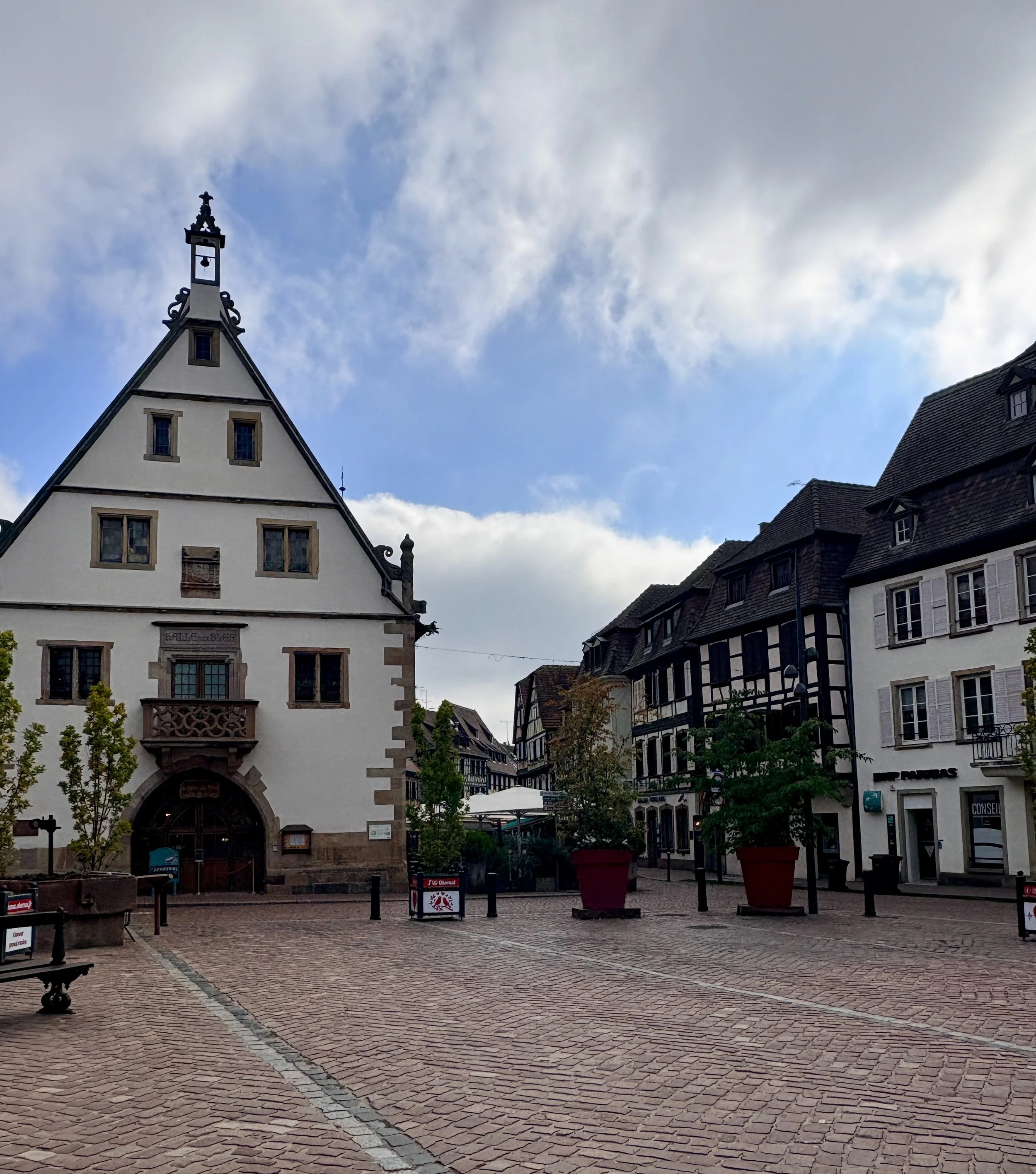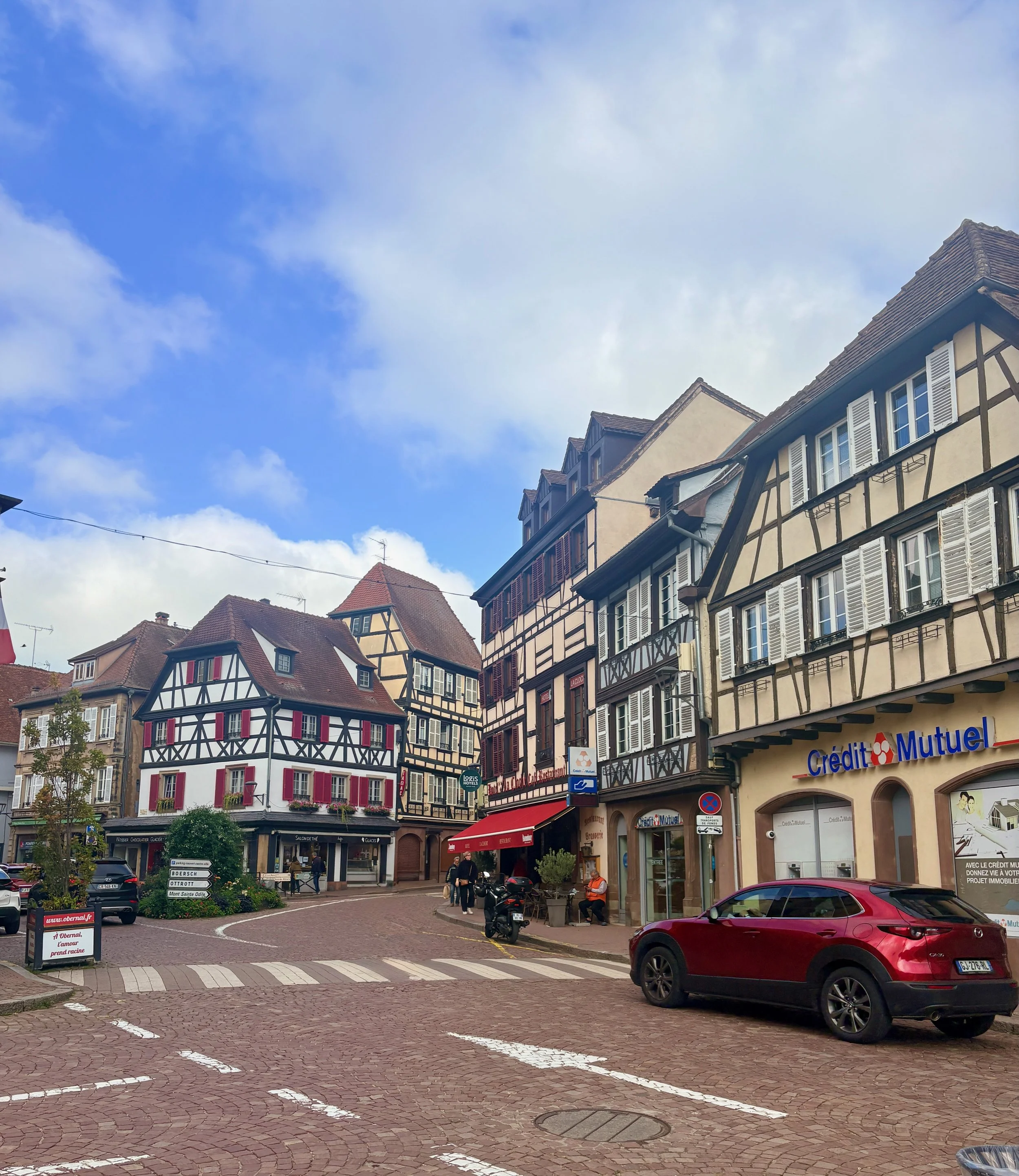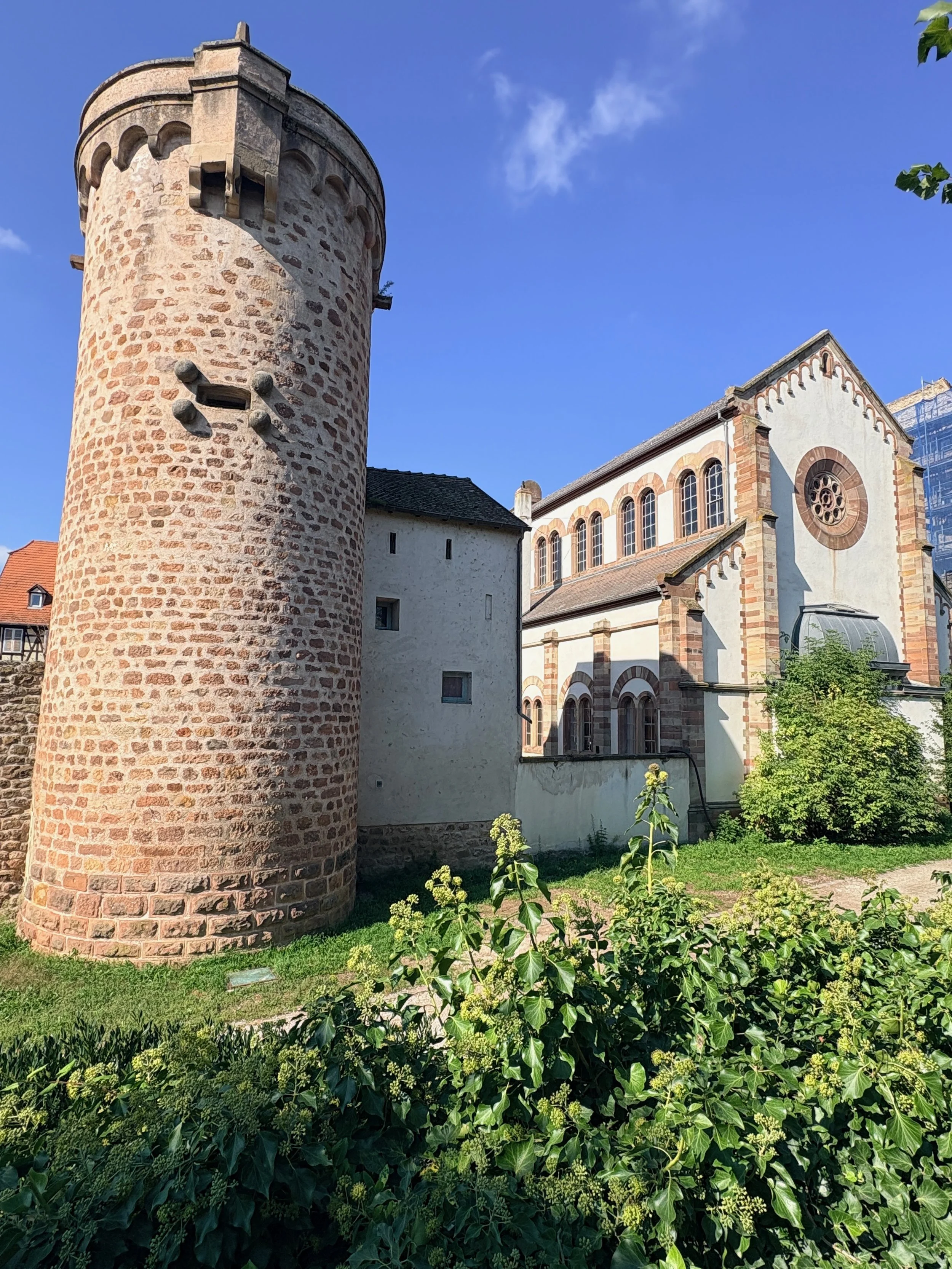Exploring the Alsace Region from Strasbourg
Greetings from Strasbourg, France! We’re wrapping up our time in the Alsace region of France where we have done a lot of day and weekend trips over our month long stay. This area is a fascinating blend of French and German cultures and is really unique compared to other parts of France we’ve visited. Our Airbnb location in the suburbs of Strasbourg has provided a great opportunity to get out and explore both sides of the border!
We took day and weekend trips to Germany, Switzerland, and within France while we were in Strasbourg for our month long stay. We used the bus and the train for some trips, but a car is really needed for some of these sites. We rented cars for two short breaks while here. Car rentals are easy from the Strasbourg airport, and you can get to the airport by train or Uber.
In this post I’ll share the trips we made within France. Stay tuned for a future post about our trips to Germany and Switzerland!
Fort Schoenenbourg and the Maginot Line
An hour north of Strasbourg you’ll find a series of pre-World War Two defensive forts that form the Maginot Line. These were built by the French in the 1930s with the goal of stopping a German invasion. Fort Schoenenbourg is the largest remaining fort and is open to the public to tour the vast underground structures. The fort saw a few days of fighting in May 1940, but was ultimately abandoned by the French when they surrendered later that summer. At its peak, over 600 men lived in the tunnels of the fort.
The tour takes about 2 1/2 hours to walk the 1.9 miles of tunnels and read about how soldiers lived and worked in the fort. It is quite a chilly 53° underground! Most of the signage is available in English and the staff was well equipped in German, French, and English to handle all the visitors. We were surprised how many people were there the same day we were! Opening times are limited, so make sure you read the website in advance to time your visit! If you enjoy military history and learning about the guns used in World War Two, this is your place! There is no public transportation here, so a car is required.
Haut-Koenigsbourg Castle
At one time, over 600 castles dotted the tops of the Vosges mountains in Alsace. Today, over 70 remain in one form or another. Many are hard to access and require long hikes. We visited Haut-Koenigsbourg, which is located an hour south of Strasbourg. Over 900 years old, it was completely restored in the early 1900s by Kaiser Wilhelm when the region was part of Germany. The castle is in the Germanic style…perched high on a mountain top and built for strategic defense.
We used a car to visit the castle, and planned our day around European Heritage Days so entrance was free. Normal tickets are €12. You can also take the train to Sélestat and take the shuttle bus (500) from the station and receive a discount on the castle ticket price, but make sure to check the schedule as service is limited outside of the peak summer season. As this is a castle on a hill, there is a good amount of walking and stairs to maneuver!
We really enjoyed our morning here. They do a great job documenting how the castle was adapted and restored through the years. The views are stunning! A visit to the castle could easily be incorporated into a longer day with stops into other villages along the Wine Route!
Colmar, Eguisheim, and Obernai on the Alsace Wine Route
South from Strasbourg you’ll find the beautiful villages and stunning scenery of the Alsace Wine Route. Charming half timbered medieval villages with winding streets. Wine vineyards as far as the eye can see framed by the Vosges Mountains. Hearty Alsatian cuisine. It is a great way to spend a few days. We visited three cities in this area: Colmar, Eguisheim, and Obernai.
Colmar
Colmar is the largest of the three that we visited and you can easily spend half a day there, wandering the streets and dining at an outdoor cafe. We had picture perfect weather the day we visited. We drove there, but you can easily take a train from Strasbourg. They leave Strasbourg every 30 minutes. Like many other cities in this area, Colmar is well known for it’s Christmas Market, and we hope to come back some day to enjoy it. Colmar was the home to Frederic Bartholdi, the designer of the Statue of Liberty, and there is a museum there representing his work. Other must sees include the Collégiale Saint-Martin de Colmar, the Petite Venice area of canals, and the indoor market.
Eguisheim
Eguisheim is a very small village 10 minutes south of Colmar, and was named one of Les Plus Beaux Villages de France (Most Beautiful Villages). The narrow winding streets are colorful half timber houses. There is not a train station here, so a car is needed to visit. Storks are found in this area, and in Eguisheim you can see their massive nests on the tops of buildings! You can see one on the steeple of the church in the picture below!
There are quite a few wineries that have tasting rooms here, and that was the primary focus of our visit. We did two tastings of local wine. The specialty of this region is white wine, and you’ll find predominiately dry wines like Reisling and Pinot Blanc. Tastings were €10 for six pours but waived if you purchased two bottles. The prices of wine are extremely affordable by US standards, and you can get quality bottles for less that €15. Needless to say, we had a great time!
Eguisheim was perhaps my favorite village we visited. It absolutely feels like you’re in a movie set!
Obernai
We were originally going to make Obernai our home for the month, but changed to the Strasbourg suburb of Illkirch-Graffenstaden instead. We actually visited Obernai twice during the month. Once, after our visit to the Haut-Koenigsbourg castle we stopped in at a local organic festival. Then we returned again to have lunch the next week. Obernai is accessible by train from Strasbourg and it takes 30 minutes to get there. It is a cute walled city, also known for its Christmas Markets. There isn’t a lot to do there, but we enjoyed a great lunch in the city center and a walk around the old medieval walls.
There is so much to explore in the Alsace and we really enjoyed our explorations in the area! From World War Two history to colorful storybook villages it is a fascinating look into the unique culture of the region.

